 Publisher Granna’s 2022 Gutenberg was a surprise hit. Taking the history of the printing press and turning it into a bidding/rondel Euro title struck a chord with players around the world. Now in 2024, the smaller spin-off title Printing Press has arrived from Portal Games. Now, though, instead of competing with medium-heavy Euros, this new title is instead entering the small, drafting, puzzle game market that Calico, Cascadia, and Sagrada corner. How does it shape up to those titans, and does this game live up to the shoes of its predecessor?
Publisher Granna’s 2022 Gutenberg was a surprise hit. Taking the history of the printing press and turning it into a bidding/rondel Euro title struck a chord with players around the world. Now in 2024, the smaller spin-off title Printing Press has arrived from Portal Games. Now, though, instead of competing with medium-heavy Euros, this new title is instead entering the small, drafting, puzzle game market that Calico, Cascadia, and Sagrada corner. How does it shape up to those titans, and does this game live up to the shoes of its predecessor?
Gameplay Overview:
In Printing Press, players will be drafting frames and their attached plates, then cards to fill those frames, all to achieve the most points. Players gain those points through completing objectives that are listed on the frames and plates. The more objectives completed, the more points gained, and if all objectives on the plate are completed, bonus points are allocated.
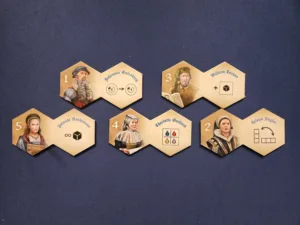
The frames themselves are filled with the cards through several rounds of drafting. Each card has three symbols on it (which may or may not match the objectives on the frames) and can be laid out on the table in any layout desired, keeping the orientation implied on the card. This means that you can overlay the cards onto one another to better achieve the symbols required for your goals.
After all the cards are drafted for the round, players will then place their frame over their cards placed on the table, locking in a 3 x 3 grid of symbols. Players check their goals, score their points, and complete three total frames to complete a game. Finally, end-game goals listed on the bottom of each frame are scored, and the winner is determined. Will you be the best at fulfilling your printing orders, or will you run out of ink before the end of the game?
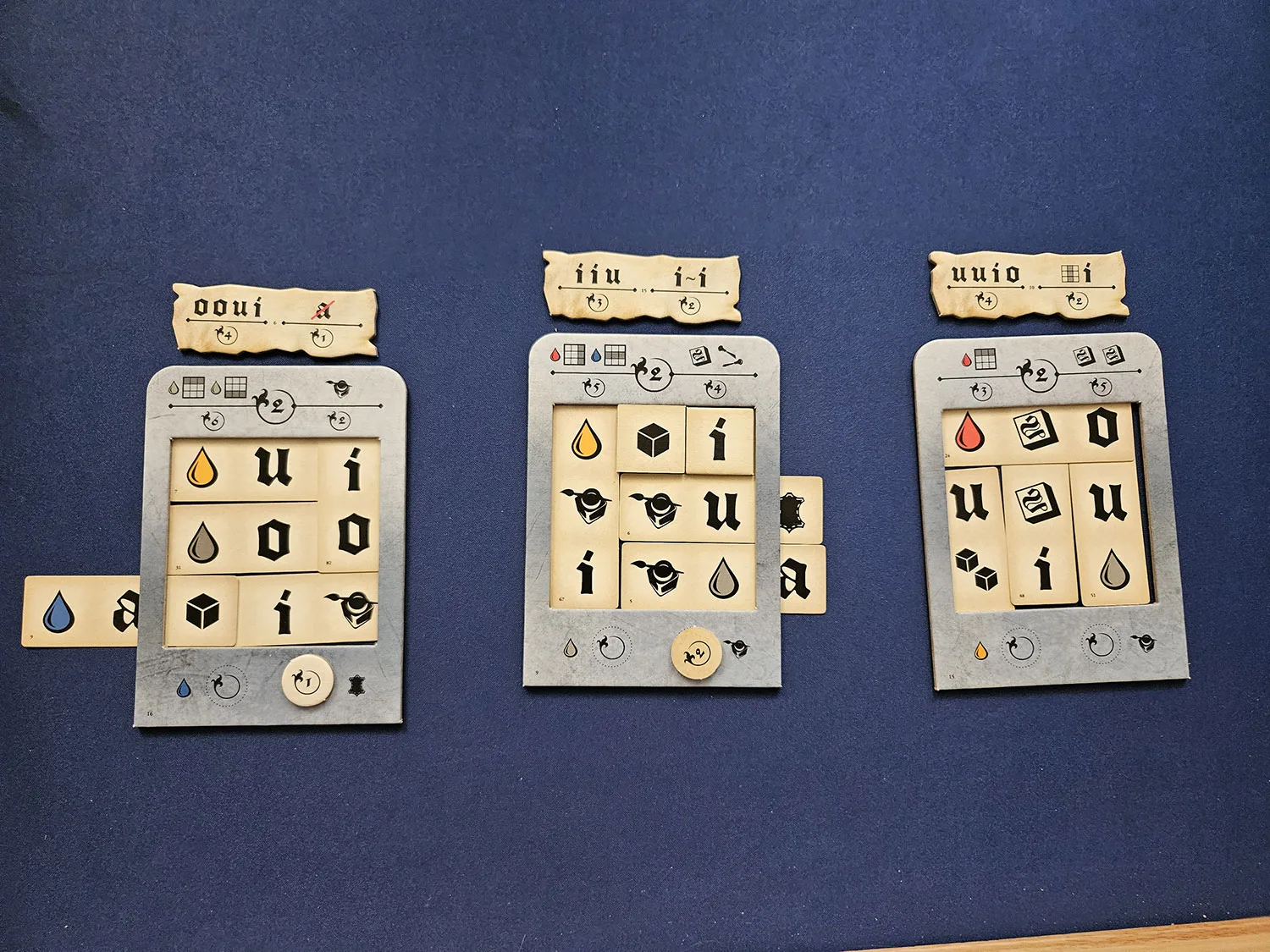
Game Experience:
Printing Press is easiest to sum up as “charming”. From start to finish, the game excels at the “fast and dynamic gameplay, full of tactical decisions” it promises in its description. Each decision feels crucial for your victory, even if you can override those same decisions in a few turns when you realize what a mess you made of your board. Each round is just long enough: the time to fill each frame feels meaty enough to have impact, but not too long to overstay its welcome. Each goal feels accomplishable, even if it turns out not to be due to poor planning. Through and through, this game feels punchy and mostly free of any fluff.
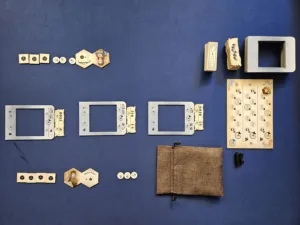
There is the matter of turn order, though, which does bring in a sort of clunkiness to the game that feels entirely unwelcome. During each round, through sort of “pity actions” the game throws at you, players will be acquiring black cubes. These cubes determine turn order. So, in this snappy drafting game where turns happen both quickly but also simultaneously, everything must come to a halt to count up cubes and see who’s first, second, etc. to draft each and every round. This brings the game to its knees and seems to make up about a third of the game’s playing time. This feels especially egregious because the game comes with no counters, markers, etc. to track this order.
This turn order system, counter to its implementation, is brilliant. Being able to reduce the symbols you play in your play area to increase your initiative is a great trade off. Partnering that with the fact that each turn, the player who drafts last gets one of these cubes keeps initiative changing nearly each round, preventing one player from feeling like they lost the game due to never being able to choose first.
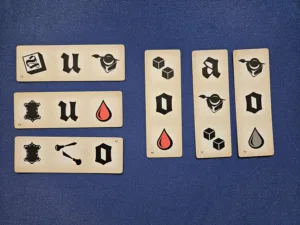
The game’s ideology on difficulty and toughness of choice also needs to be addressed. First, there’s two difficulty options included in the game: six card drafting rounds for the easier mode, and five card drafting rounds for the harder mode. While on paper this seems to allude to tighter, tougher decisions with fewer drafting rounds, what it actually does is create more randomness. If players have less time to react to the random draw of cards out of the deck, then the game is more random, which is an odd choice for the harder mode. Technically yes, the game is harder at that point, but the player vs. player difficulty is actually reduced because players simply cannot react to the cards as thoroughly.
The other aspect of difficulty adjustment the game provides is with the addition of tiles you can place. These are both tiles you have in your hand from set-up you can place at any time onto your play area and tiles you can draw and play in lieu of drafting your card that round. I think this entire mechanic is unnecessary. In my five games, I used a tile once. Maybe this has to do with playing at two or three players instead of the full count of four, but I really don’t feel that adding in a system to obfuscate cards is necessary. It takes away from the tight, sometimes painful decisions required in a short, puzzly drafting game like this.
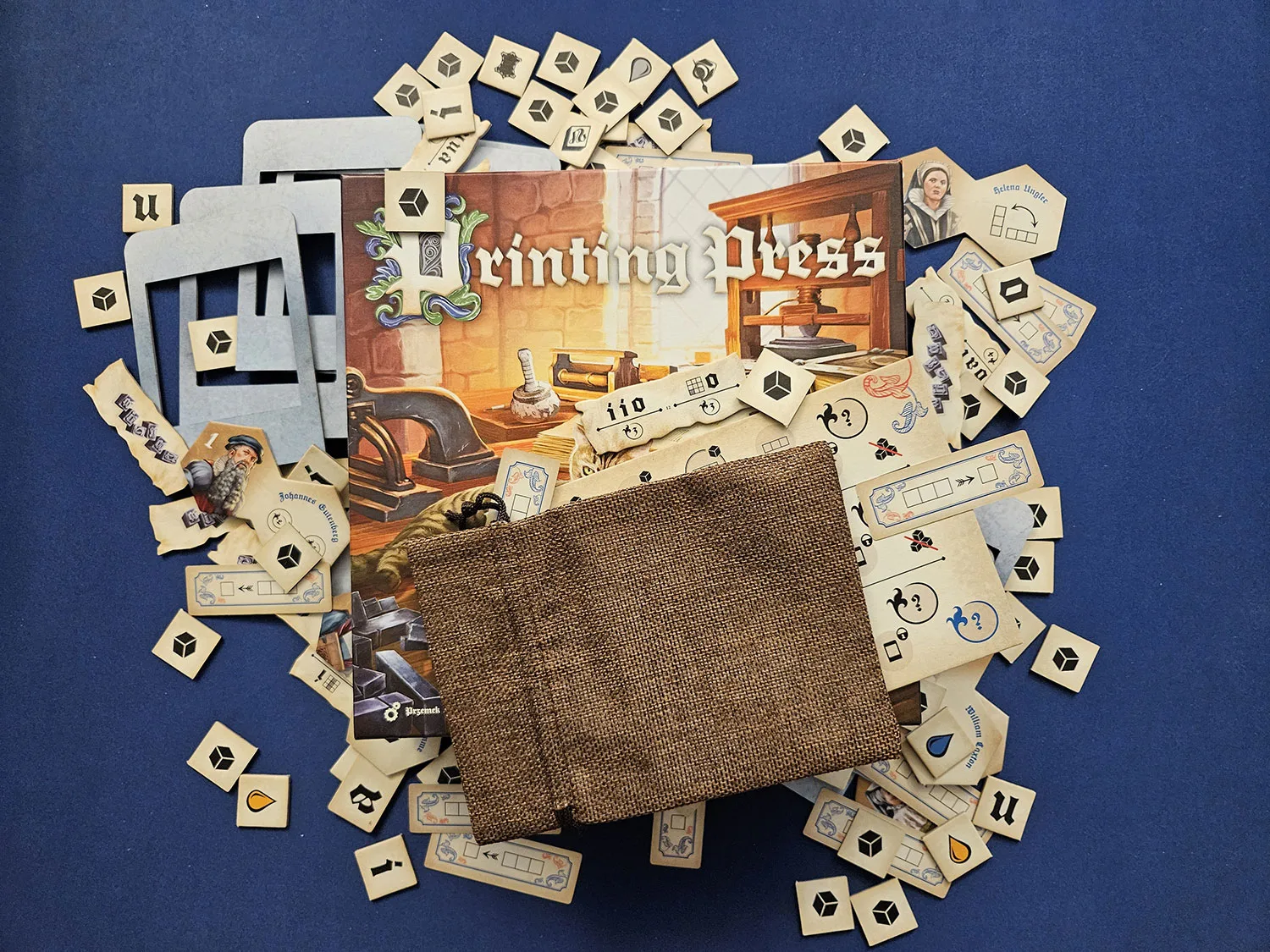
Final Thoughts:
Overall, Printing Press is a charming experience. Its tightness with its drafting decisions and its snappy playtime make it a go-to end of night or family experience. However, with its initiative system and the additional overwrite tiles mechanic, what could be a perfect game is slogged down and cluttered with a bit of excess. But don’t fret: those mechanics do not hinder this game from shining bright. Do not sleep on this title if you love games like Cascadia and Sagrada, or if you love the theming of Gutenberg.
Final Score: 3.5 Stars – A phenomenal drafting game under a few frustrating systems.
 Hits:
Hits:
• Tight, enticing card drafting
• Deceptively simple (yet difficult) objectives
• Focused playtime
Misses:
• Overwrought initiative system
• Unnecessary “catch-up” tile mechanic
• Difficult-to-handle components






















